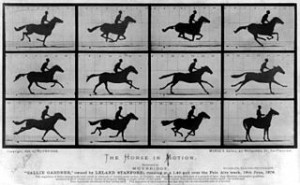Circus of Dreams (Part 3)
By Asher Crispe: November 19, 2012: Category Decoding the Tradition, Inspirations
To Light Up the Night
 Quantities can string together many qualities that at first glance have nothing to do with each other. For instance, three chairs, three tomatoes, three insects and three people all share a common three-ness which levels their differences. Identical quantities enable unlike objects to band together into groups. We can suddenly compare the incomparable. While mathematicians make use of this trick of the trade all the time, the non-mathematician may resist such swapping of identities and therefore regard such unions as fabrications or foul play.
Quantities can string together many qualities that at first glance have nothing to do with each other. For instance, three chairs, three tomatoes, three insects and three people all share a common three-ness which levels their differences. Identical quantities enable unlike objects to band together into groups. We can suddenly compare the incomparable. While mathematicians make use of this trick of the trade all the time, the non-mathematician may resist such swapping of identities and therefore regard such unions as fabrications or foul play.
Nevertheless, in Kabbalah, measurable lines of force run through each and every Hebrew word energizing it’s multilayered meaning. One of the essential modalities of flushing out this meaning comes from mathematical analogies with particular emphasis on quantitative comparison. Due to the secondary function of Hebrew letters as numbers, the seedbed of associations and pollinated meanings are readily nourished by both causal affiliation and serious relationships of numerical equivalency.
For our present discussion of the month of Kislev and the letter Samech, the thought thread weaves through an entire constellation of phenomena that resembles the number represented by the Samech which is sixty. What are some of the secrets of 60 and how do they relate to the graphic form of the letter which roughly looks like the geometric figure of a circle? How does the common conceptual denominator of the number 60 enhance our understanding of this darkest of months, let alone our perplexing experience of sleep and dreams?
For starters we find a double time reference to the Samech: not only is it the letter that reflects the spiritual potential of the month of Kislev, Rosh Chodesh (the new moon or beginning of the month) Kislev falls out on the 60th day of the year starting from Rosh Hashanah. Sixty days (read ‘Samech’ days) into the new year and we hit the innovation (Chodesh or month relates to chidush or innovation in Hebrew) of the letter Samech. Because Samech means ‘support,’ the timing of its appearance implies that it is both the support for change (Samech of the year whereby year or ‘shanah‘ means change), and one of twelve symbols (twelve for the twelve months) for innovation (in that the word month means a ‘novelty’ or ‘innovation’). Altogether then, the Samech supports overall change (60th day of the year) through a specific form of innovation (letter of the month).
Since the month of Kislev is the time of maximal darkness and darkness would generally signify that which is spiritually undesirable, it would follow that part of the support offered by the Samech would be a means of transforming the night. Surveying the teaching of the Sages in the Talmud, we find the concept of some undesirable state being nullified when there is one part in sixty. We see this with the ratio of 1/60th which comes up with regards to the dietary laws of keeping kosher. For example, if some kosher milk accidentally falls into a pot of kosher meat, based on the prohibition of mixing meat and milk in the Torah, the meat can be rendered can unkosher. The presence of the milk in the meat or the meat in the milk constitutes a forbidden mixture with one very important exception: if the amount of milk that fell into the pot of meat was less than 1 part per 60 then it’s considered nullified and non-existent. In this case, we only consider the super-majority of meat which exceeds the milk by a factor of sixty. Thus, the Samech effectively nullifies the undesirable situation. It negates the negativity by diluting it out of existence. So too, the innovative support of the month of Kislev supplies us with the ability to nullify all of the darkness and undesirable aspects of exile via the contemplation of this letter.
In the dark of Kislev we sleep. According to the Sages, a person is considered to have experienced 1/60th of death each time he or she falls asleep. Our loss of contact with our surroundings and with our conscious mind and ego during sleep is a ‘taste’ of death. Lying in our graves and lying in bed resemble one and other. But what qualifies as a state of sleep? How long do we have to nod off for before we are officially and by all accounts asleep? The Talmud’s answer is sixty breaths (which again alludes to the Samech).
Why sixty breaths? There are various opinions as to how long sixty breaths take to transpire, but rabbinical commentators maintain that they are very slow or elongated breaths like that of a horse. It is said that King David (who we had mentioned previously as being the one who existentially falls and needs Divine support to be lifted back up again), slept like a horse which means that he slept standing up. Because a degree of spiritual impurity is associated with a person who has slept (a small death), David strove to avoid this by rousing himself at regular intervals that were less than the amount of time it took a certain horse to take sixty breaths. Asleep on his feet, his body would begin slumping down waking him up before he was considered fully asleep and therefore subject to any spiritual impurity.
In this example, one Samech or sixty leads into another: sixty breaths while sleeping causes 1/60th of death. One of the most general allusions of the Samech as a circle is that it symbolizes free associations. Linking things together via roundabout connections contrasts with the direct linear logical bonds. The Kabbalistic formula for one association (Samech) hooking up with another association (Samech) is literally prefigured in the pictographic form of the Hebrew letters for the word sus (סוס) which means ‘horse.’ The choice of both a horse and the word for horse (signified and signifier alike) to typify and illustrate sleep states was no accident. Spelled Samech (ס), Vav (ו), Samech (ס) or ‘support via association,’ then connection (Vav means ‘hook’ in Hebrew) and then another Samech (or support via association).
This marrying of ‘associates’ continues over and over again integrating each new association or Samech such that it might look like סוסוסוסוסוסוסוסוסוס (which can be interpreted as one indirect connection linked to another indirect connection and on and on). If we were to consider the film strip of a horse galloping across the screen and we slowed the playback down we would see that the arched and outstretched legs of the horse keep producing semi-circles which our mind fills in as though they were full circles or strings of the letter Samech. At the same time, the body of the horse which progresses along through all of the moments of it’s run embodies the linear Vav.
 In practice, the Talmud keeps expanding this ‘horse’ of running associations when it adds the idea that when we sleep we dream and our dreams are considered to be 1/60th of prophecy. From here, we can say that the montage of images in a dream we experience do contain a message of some importance rather than just plain noise generated by the imagination. At the same time, not everything we dream matters. Much of the experience is non-sense. Picking out the useful data from the stream of images and assembling it into a coherent message requires the work of a dream interpreter. While dreams are unquestionably powerful experiences, they nonetheless remain the most watered down form of prophecy and therefore should be approached with a modicum of healthy suspicion.
In practice, the Talmud keeps expanding this ‘horse’ of running associations when it adds the idea that when we sleep we dream and our dreams are considered to be 1/60th of prophecy. From here, we can say that the montage of images in a dream we experience do contain a message of some importance rather than just plain noise generated by the imagination. At the same time, not everything we dream matters. Much of the experience is non-sense. Picking out the useful data from the stream of images and assembling it into a coherent message requires the work of a dream interpreter. While dreams are unquestionably powerful experiences, they nonetheless remain the most watered down form of prophecy and therefore should be approached with a modicum of healthy suspicion.
In Part Four the Samech transforms into the image of ‘dream support’ by revealing the power of interpretation as the process of sweetening that builds up and onto the dream.
Circus of Dreams (Part 3),












;)
;)
;)
;)
;)
;)
;)
;)
;)
;)
